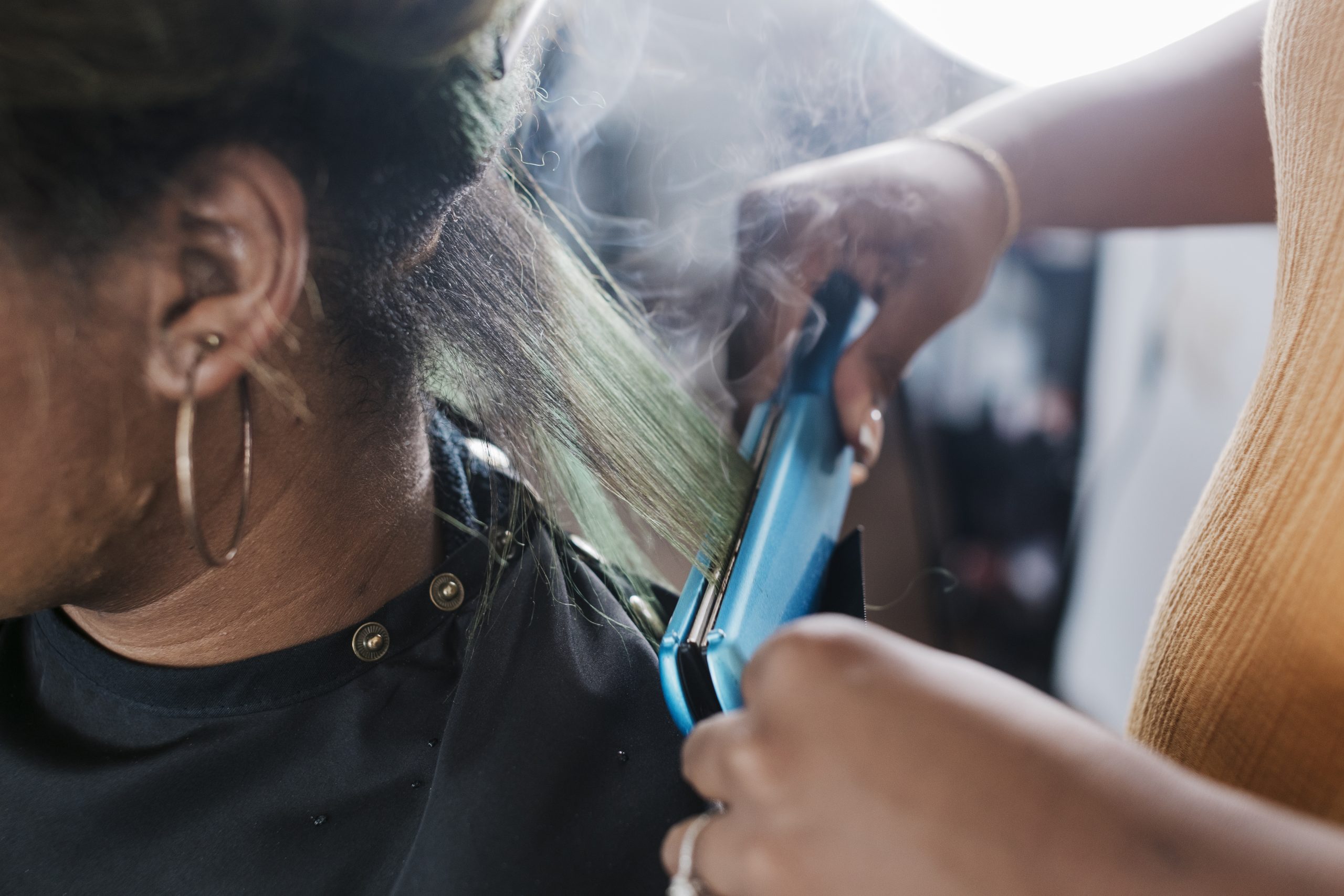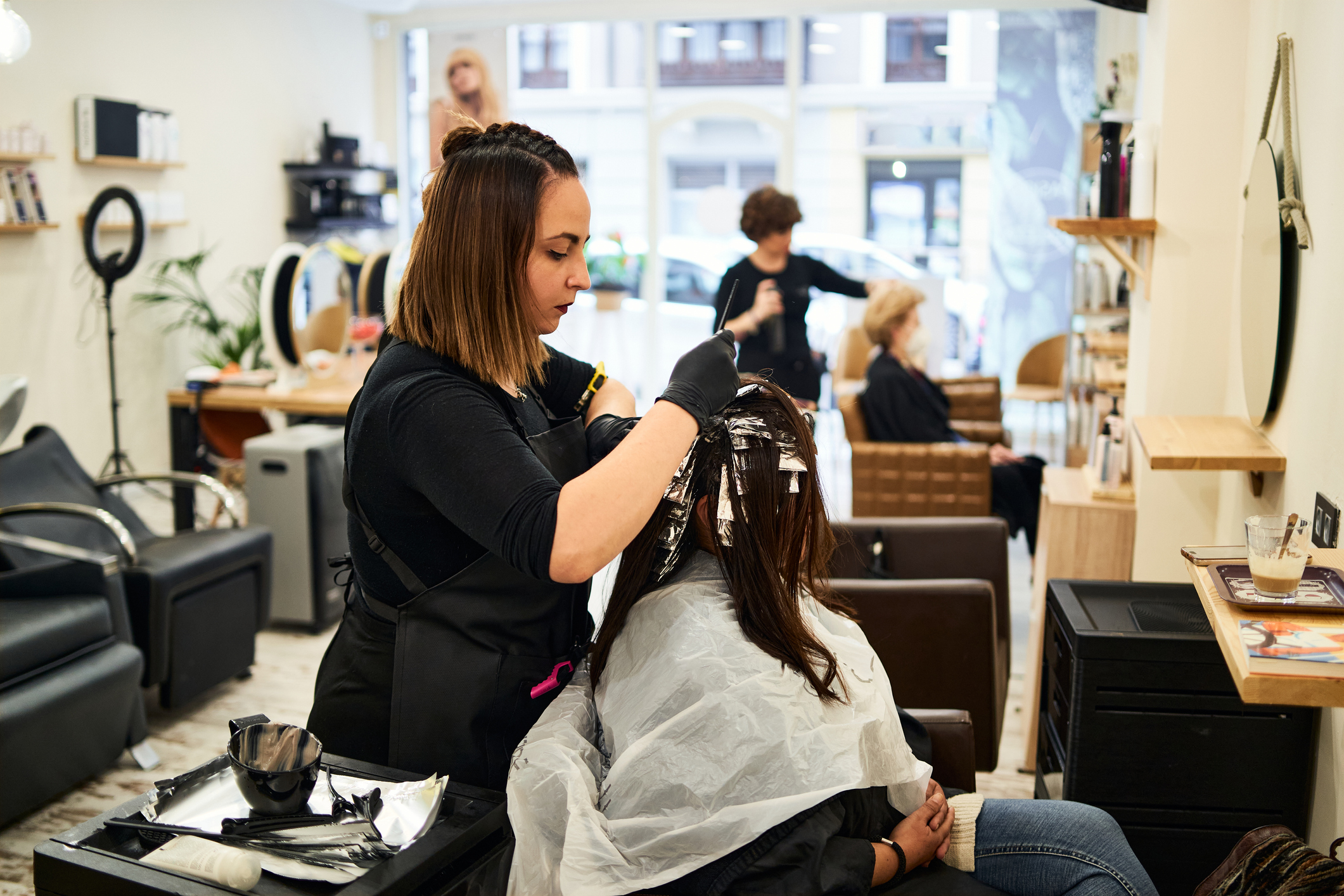Hair Care Products Generally Safe, But Over-exposure Poses Risks
- Millions of people use personal temporary hair dyes a few times a year, and overall, the cancer risks from using these products remain low. The National Cancer Institute says dyes are not carcinogenic. However, permanent hair dye use may pose an elevated cancer risk, especially for women at risk of breast cancer.
- Haircare professionals like hairdressers and barbers who use hair chemicals beyond personal dyes may face elevated cancer risks due to added exposure.
- People who use hair straighteners and relaxers that contain chemicals such as parabens, bisphenol A, metals, and formaldehyde may face increased cancer risk. Formaldehyde is considered carcinogenic to humans. Parabens and bisphenol A are considered endocrine-disruptive chemicals (EDCs) and can mimic estrogen hormones potentially affecting breast cell growth.
- SurvivorNet experts recommend regular exercise, a balanced diet, and stress management for cancer survivors to lead healthy lives. Getting regular checks for recurrence may also be recommended.
While the general public may not face significant risks, it’s a different story for hairdressers and barbers. These professionals are exposed to certain chemicals that the International Agency for Research on Cancer (IARC) has classified as “probably carcinogenic” to humans. This underscores the potential health hazards they face in their line of work.
Read More
A 2013 study published in the International Journal of Trichology examined hair-dying usage among 263 people. Most started dying their hair in their late 20s and used mostly synthetic dyes. Among women, the vast majority understood that using hair dye during pregnancy was unsafe. Some side effects of using hair dyes from participants in the study were primarily occasional headaches and itching.
The NCI assessed studies on specific cancer types and their cancer risks related to using personal hair dyes. Bladder cancer and non-Hodgkin lymphoma had little to no association with cancer risk.
Personal hair dye use and breast cancer may pose a slightly elevated cancer risk, the NCI says.
“White women reported an increased risk of breast cancer overall, and of hormone receptor-negative breast cancers, with increasing exposure to hair dye,” the NCI said.
Helping You Reduce Your Cancer Risks
- ‘Annual’ Screenings For Breast Cancer Survivors May Not Be Necessary, New Study Suggests
- ‘Get Your Pap Tests, Ladies!’ — Actor Marcia Cross Advocates for Screening During Cervical Cancer Awareness Month
- 3 Common Myths About Ovarian Cancer Screening
- Black Americans Need to Prioritize Cancer Screenings, Says Leading Radiation Oncologist
- Cancer Screenings Dropped By More Than 75% at Start of Pandemic Don’t Delay Yours Any Longer
Hair Care Professionals Face an Increased Cancer Risk
However, haircare professionals who work with hair chemicals often risk carcinogenic exposure, which increases significantly compared to an ordinary person dying their hair a few times a year.
A report published in Occupational and Environmental Medicine highlighted certain jobs that come with added cancer risk.
“Women working in hairdressing-related occupations are exposed to hundreds of chemicals at high concentrations, including hair dyes, shampoos, conditioners, styling products, and cosmetic products,” the study reads. In our study, employment in hairdressing-related occupations and exposure to 12 agents prevalent in these occupations were suggestively associated with increased risks of ovarian cancer.”
Researchers examined environmental exposures, including cooking fumes, cotton dust, and cosmetic talc, to help determine risk. Hairdressers, beauticians, and barbers with at least three years of experience far exceeded other occupations regarding ovarian cancer risks, such as accountants, embroiderers, salespeople, and nurses.
Hair Straighteners and Relaxers Pose Cancer Risks
In 2022, the National Institutes of Health (NIH) said, “Women who used chemical hair straightening products were at higher risk for uterine cancer compared to women who did not.”
The study impacted Black women in particular because they were more likely to use hair straighteners and to use them at earlier ages to meet Eurocentric beauty standards, which emphasize light skin and straight hair, the Columbia Mailman School of Public Health explains.
A 2020 study published in the International Journal of Cancer suggested that permanent hair dye, hair straighteners, and relaxers “may increase breast and ovarian cancer risk.”

Some hair dyes, straighteners, and relaxers contain chemicals such as parabens, bisphenol A, metals, and formaldehyde, which may increase cancer risk.
Formaldehyde is considered “carcinogenic to humans” and can contribute to leukemia and nasopharyngeal cancer, the American Cancer Society says.
Research published in the International Journal of Environmental Research and Public Health says that parabens and bisphenol A are endocrine disruptors (endocrine-disruptive chemicals, EDCs). Parabens, in particular, can be found in a wide range of products people use daily, from hair products to food and pharmaceuticals. The potential issue arises because they can mimic estrogen hormones and affect breast cell growth.
Steps You Can Take to Reduce Your Cancer Risk
The exact cause of cancer development remains unclear, mainly from person to person. However, we know some risk factors for the development of certain cancers, such as smoking in lung cancer and excessive alcohol and liver cancer.
Here are some helpful tips to help you further reduce your cancer risk.
For starters, be sure to keep up with your routine cancer screenings and be aware of your family history of cancer, which can increase your own cancer risk.
Among women, annual breast cancer screenings and self-exams are good ways to keep an eye on any early signs of breast cancer.
The medical community has a broad consensus that women have annual mammograms between the ages of 45 and 54. However, an independent panel of experts called the U.S. Preventive Services Task Force (USPSTF) is saying that women should now start getting mammograms every other year at the age of 40, suggesting that this lowered the age for breast cancer screening could save 19% more lives.
The American Cancer Society recommends yearly mammograms for women 55 and older. However, women in this age group who want added reassurance can still get annual mammograms.
WATCH: Mammograms are still the best tool for detecting breast cancer.
Women with a strong family history of breast cancer, a genetic mutation known to increase the risk of breast cancer, such as a BRCA gene mutation, or a medical history, including chest radiation therapy before the age of 30, are considered at higher risk for breast cancer. If you are considered high-risk, talk to your doctor about breast cancer screenings earlier than 40.
Among men, prostate cancer screening is extremely advantageous because this type of cancer is highly treatable if caught early.
One of the tests is the PSA test, a simple blood test that screens for prostate cancer. It looks for more significant amounts of protein-specific antigen (PSA) in the blood. An elevated PSA test does not always mean you have prostate cancer. It could also reflect that your prostate is enlarged, which is common, or it could signal an infection or inflammation.
Your doctor may also conduct a digital rectal exam (DRE) to check your prostate for lumps.
Depending on the results of these tests, imaging scans and a biopsy may be ordered.
WATCH: How Gleason Grade Determines Treatment
After tests are conducted, your doctor analyzes the results to give you a Gleason Score. This score ranges from 6 to 10. The higher the score, the more aggressive the cancer.
This score, along with your other test results, helps doctors determine if your cancer is “low risk,” “intermediate risk,” or “high risk.”
Young people are being impacted by colorectal cancer at increasing rates. However, a colonoscopy and monitoring your bowel habits can help reduce colorectal cancer risk.
Most colon cancers can be prevented if people are regularly screened. The screening usually involves a colonoscopy, in which a long, thin tube attached to a camera examines the colon and rectum. If no polyps are discovered, the following screening won’t be needed for about ten years.
WATCH: The effectiveness of colonoscopies.
The American Gastrointestinal Association lowered the recommended initial age for a colorectal screening from 50 to 45.
Try to Live Your Healthiest Life Possible
The general recommendations for a healthy lifestyle are similar whether you have cancer or not.
Dr. Ken Miller, the Director of Outpatient Oncology at the University of Maryland Greenebaum Cancer Center, shared some guidelines for cancer survivors who are concerned about a recurrence with SurvivorNet:
- Exercise at least two hours a week, and walking counts.
- Eat a low-fat diet.
- Eat a colorful diet with lots of fruits and vegetables. The American Cancer Society recommends aiming for two to three cups of vibrant vegetables and fruits each day.
- Maintain a healthy weight. Studies have shown that being obese can increase your risk for several types of cancer.
“The more physically fit you are going through your cancer treatment, the fewer side effects you’ll have and the faster you’ll get back to your normal quality of life,” Dr. Sairah Ahmed told SurvivorNet.
Dr. Ahmed is an associate professor in the Department of Lymphoma/Myeloma, Division of Cancer Medicine, at MD Anderson Cancer Center.
Learn more about SurvivorNet's rigorous medical review process.

